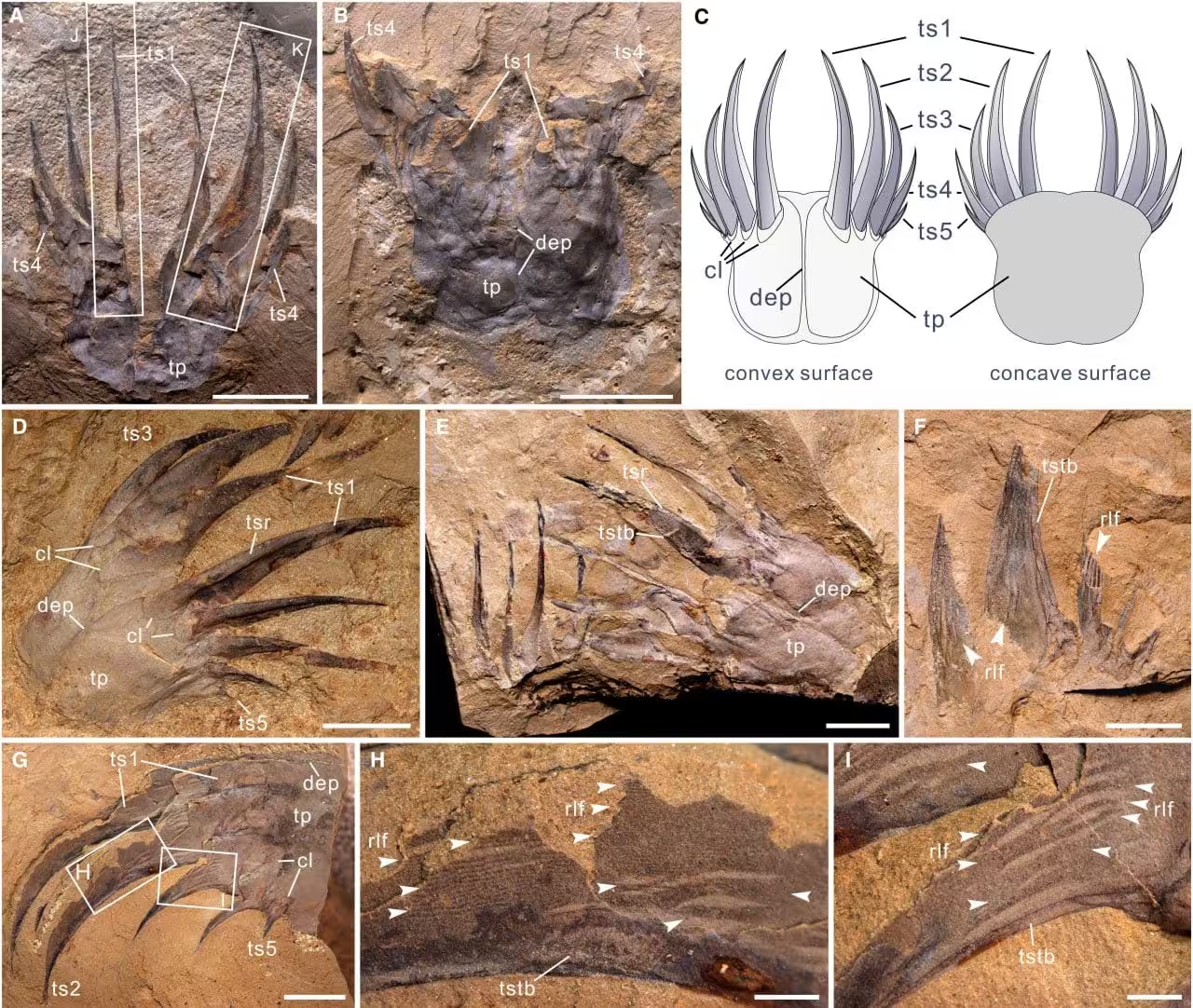Chinese and British scientists have discovered in Cambrian sediments in southern China the remains of arthropods that lived on the planet more than 500 million years ago. Due to the unusual structure of the ancient creature’s mouth apparatus, paleontologists attributed the find to a new species, the second for the genus Omnidens. The claw-like hairpins growing near its mouth have forced experts to rethink some aspects of the evolution of Cambrian predators.
The fauna of the Early Cambrian period (538.8-485.4 million years ago) is primarily known for peculiar molluscs and arthropods. Among the latter there were quite large marine predators; for example, omnidens amplifierAccording to some estimates, it is the only representative of its kind that can reach two meters in length. However, only the fossil mouth apparatus of the creature discovered in the Cambrian rocks of China is known.
Jaws in 2016 O. amplus compared to the only known species, the arthropod Pambdelurion. Pambdelurion whitingtonihenceforth the two taxa are considered synonymous. Early Cambrian organisms are intriguing because they reveal the origin of the radiodont class sometimes called “monsters” and “horrors.”
These large predators of the ancient seas acquired compound eyes as early as 500 million years ago, it was revealed in 2020. The discovery supported the idea that vision became a very important change during the Cambrian explosion.
Recently, paleontologists from China and England reported the discovery of unusual mouth appendages of a prehistoric arthropod; this points to a new, second species of the genus omnidens . According to the researchers, the results force a re-evaluation of the origin of circular mouthparts in radiodonts and shed light on the evolution of their ancestral body plan. A detailed description of the finding was published in the journal Paleontology Articles.
The samples were collected from the Hongjingshao Formation in southern China’s Yunnan Province, dated to the third stage of the second part of the Cambrian period. In other words, the creature whose remains were found lived approximately 521-514 million years ago. In total, scientists found 18 jointed remains and 26 plates with scattered elements.
After all, the animal’s oral apparatus was not circular, but consisted of two paired claw-like plates on “jaws”. Such a feature allowed the authors of the article to attribute the arthropods to a new species: Omnidens qiongqii. Its name comes from the name of Qiunzi, one of the four wild beasts in ancient Chinese mythology. He is depicted as a tiger with wings and spines. According to paleontologists, the teeth of the fantastic beast resemble the oral apparatus of an extinct arthropod.
Experts counted 10 claw-like structures in each “jaw” of the ancient predator (five on the left and right); such a large weapon demonstrates exactly this principle of nutrition. The length and width of the largest spike reached 3.8 and 1.4 centimeters, respectively. The size of the smallest claw was four millimeters long and three millimeters wide. When the mouth was closed, these structures, arranged in a fan shape from longest in the middle to shortest on both sides, folded to produce prey. They also had a spine pointing downwards.
The combination of such features surprised scientists, because the signs do not fit with the idea that radiodonts acquired the rounded structure of the mouth without molting (ecdysozoa), treasures of primitive creatures. Radiodonts may have invented or inherited this mouth configuration.
The authors of the study also noted that the claws, located on the left and right on the two “jaws” of Cambrian arthropods, were a solid part of the body. According to paleontologists, this detail fills the evolutionary gap between soft-bodied lobopods (moulting invertebrates) and radiodonts, whose bodies were already covered with an exoskeleton. Experts were convinced that the development of these arthropods was not linear.
Source: Port Altele
